
Fast, affordable Internet access for all.

Cullman, Alabama-based Cullman Electric Cooperative says it is launching a new phase of fiber deployment after receiving a $7 million grant to bring affordable fiber access to long-neglected Cullman and Winston counties.
The financing was made possible by the Alabama Broadband Accessibility Fund (ABAF), funded by the 2021 American Rescue Plan Act (ARPA). The state has already dedicated more than $82 million in funding for Alabama broadband deployments, bringing broadband access to 72,000 currently unserved residents.
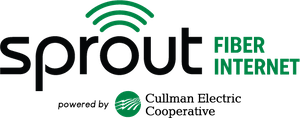
Cullman’s $7 million portion will bring affordable fiber access to 1,300 families. Known as Sprout Fiber Internet, Cullman currently offers residential customers symmetrical 300 Mbps (megabit per second) service for $60 a month; symmetrical 1 Gbps (gigabit per second) service for $80 a month, and symmetrical 2 Gbps service for $120 a month.
That’s significantly faster and cheaper service than is currently offered by any of the dominant private telecom monopolies in Cullman (predominantly AT&T or Charter/Spectrum), without usage caps, hidden fees, or long-term contracts.
First Electric Cooperative – and its broadband subsidiary Connect2First – are making major inroads on their quest to deliver affordable fiber Internet service to long-neglected portions of Arkansas.
Buoyed by an historic stretch of federal funding, the cooperative says it’s on target to deliver up to 2.5 gigabit per second service to 72,000 locations by the end of 2024.
Connect2First officials say they’ve deployed 4,371 miles of fiber across 18 counties in the southeastern part of the state, just outside of the state capital in Little Rock, delivering speeds significantly higher than seen in more urban, populous areas. The resulting service is also a notable step up in speed from regional monopolies like AT&T and Optimum, which see little market incentive to upgrade lagging networks or compete on price.
Connect2First residential customers have the choice of three tiers of service: a symmetrical 200 megabit per second (Mbps) connection for $60 a month; a symmetrical 700 Mbps connection for $60 a month; or a symmetrical gigabit per second (Gbps) service tier for $100 a month. The company’s tiers feature no service caps, hidden fees, or long term contracts.

First Electric Cooperative, headquartered in Jacksonville, Arkansas, began in 1938 with just 3 employees and 150 members. Now with 94,000 electricity customers, it’s one of the largest cooperatives in the country, and the second biggest cooperative in the state of Arkansas.
Officials in Chelan County, Washington say they are making meaningful progress on its decades-old plan to deliver affordable broadband to all 79,000 county residents. After securing financing for its latest planned fiber expansion, the Chelan County Public Utility District (PUD) says it’s exploring options to help finish the job of equitable, affordable, full-county deployment.
Chelan County PUD was formed in 1936 by local voters frustrated by costly, spotty access to electricity. Like so many utilities, cooperatives, and communities, those rural electrification efforts have helped inform the quest for ubiquitous, affordable broadband access almost a century later.
In 2001, the Chelan PUD began building a county-wide wholesale fiber network at a time when PUDs in the state were restricted from offering retail telecommunications services. (Those state statutes were rolled back by state lawmakers in May 2021). The network currently covers roughly 81% of the county, reaching about 39,000 subscribers; 21,000 of which get broadband service through one of the county’s five local ISP partners.
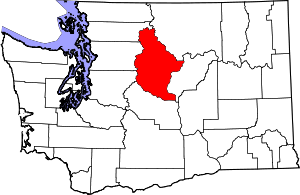
An ongoing network expansion plan aims to extend the reach of the county’s fiber network to roughly 42,000 homes and businesses. Those efforts are currently being funded by some of the $14.9 million in American Rescue Plan Act (ARPA) funds received by the county, as well as the Chelan PUD's Public Power Benefit Program, financed by surplus wholesale power sales.
Fort Worth, Texas, (est pop. 956,000) has struck a $7.5 million, 34-year contract with Dallas-based Sprocket Networks to construct a new 300-mile fiber optic backbone to shore up city municipal communications needs, expand affordable access to marginalized neighborhoods, and boost local economic development.
City officials say construction crews are expected to begin work sometime in the next three to six months, with the full network construction expected to cost $65 million and take three years to complete.
Services will first be made available to nine target neighborhoods (including Las Vegas Trail, Como, Marine Creek, Stop Six, Rosemont and Ash Crescent) on a rolling basis. Sprocket Networks will own the finished fiber network.
“This partnership was entered into with Sprocket with the hopes of eventually getting to universal service in Fort Worth,” Fort Worth IT Solutions director Kevin Gunn told ILSR in a phone interview. “We want the gold standard fiber optic connectivity: 100 megabits symmetric and up available at every doorstep, whether that's a senior family, multifamily or commercial.”
Gunn told ILSR that the city’s initial payment of $7.5 million to Sprocket consists of $4.5 million in American Rescue Plan Act (ARPA) funds, and $3 million from the North Central Texas Council Of Governments, which has allocated some of its transportation budget to broadband improvements the agency will benefit from.
In response to COVID era broadband inequities, the city of Fort Worth last year expanded free Wi-Fi access to 40,000 largely underserved city residents. Gunn indicated that those connections will be slowly phased out as the city transitions to fiber.
In 2021, California passed Senate Bill 156, an ambitious plan allocating $6 billion to shore up affordable broadband access throughout the state.
Among the most notable of the bill’s proposals was a plan to spend $3.25 billion on an open-access statewide broadband middle-mile network backers say could transform competition in the state.
An additional $2 billion has also been earmarked for last mile deployment. Both components will be heavily funded by Coronavirus relief funds and federal Broadband Equity, Access, and Deployment (BEAD) subsidies as well as California State Government grants – with all projects to be finished by December 2026 as per federal funding rules.
But while California’s proposal has incredible potential, activists and digital equity advocates remain concerned that the historic opportunity could be squandered due to poor broadband mapping, a notable lack of transparency, and the kind of political dysfunction that has long plagued the Golden State.
Massive Scale, Big Money, Endless Moving Parts
Still, California’s prioritization of open access fiber networks could prove transformative.
Data routinely indicates that open access fiber networks lower market entry costs, boost overall competition, and result in better, cheaper, faster Internet access. Unsurprisingly, such networks are often opposed by entrenched regional monopolies that have grown fat and comfortable on the back of muted competition.
CVFiber continues to make progress in deploying affordable fiber to long-neglected rural areas in Vermont, as the state’s effort to embrace CUDs (Communications Union Districts) as a cornerstone of bridging the digital divide also pays dividends.
In late 2022 CVFiber broke ground on an ambitious plan to build a 1,200-mile fiber-optic network to bring affordable gigabit broadband access to 6,000 rural Vermont addresses deemed underserved by commercial broadband providers.
According to an October announcement by the CUD, its first customers have been connected in the central Vermont town of Calais, with construction ongoing in nearby Middlesex, East Montpelier, and Worcester.
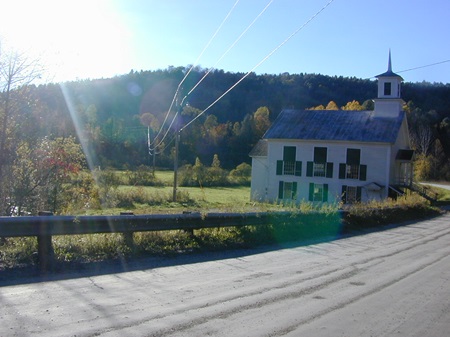
“We are enthusiastic about our progress as we bring high-speed Internet to central Vermont communities,” CVFiber Executive Director Jennille Smith said. “The progress that we have made and the impact that we’ve been able to achieve to date could not have been accomplished without the unwavering commitment from our partners. We are optimistic as we expand to other service areas.”
CUDs have proven to be a useful way for municipalities to band together to cooperatively build broadband projects that may have been financially and logistically impossible to try alone. Vermont CUDs can legally fund needed broadband expansions through debt, grants, and donations—but not taxes, though they themselves are tax-exempt nonprofits.
CVFiber’s fiber deployment is expected to cost $60 million, $27 million of which is being paid for by federal grants made possible by the American Rescue Plan Act (ARPA). The remaining cost is expected to be funded by network revenue, loans, and future grant opportunities.
Butler Electric Cooperative and its Velocity broadband subsidiary say they’re making meaningful progress in bringing fixed wireless access (FWA) — and ultimately fiber optic broadband — to long-neglected sections of rural south-central Kansas. It’s the latest example of electrical cooperatives playing a leading role in the longstanding quest to bridge the digital divide.
Butler Electric Cooperative, which provides electrical service to 7,000 meters via 1,850 miles of transmission and distribution lines, created Velocity in 2018 as part of the cooperative’s expansion into broadband access.
The service currently provides fixed wireless access to roughly 5,500 rural Kansas residents, long left out of reach of traditional cable, fiber, or DSL due to the logistical challenges and high cost of rural deployment.
The company’s current service tiers range from a 15 megabit per second (Mbps) downstream and 3 Mbps upstream tier for $60 a month, to a 100 Mbps downstream, 10 Mbps upstream tier for $84 a month. Both tiers feature a one-time installation fee of $200. The higher pricing generally reflects the higher prices of deployment to remote, rural areas.
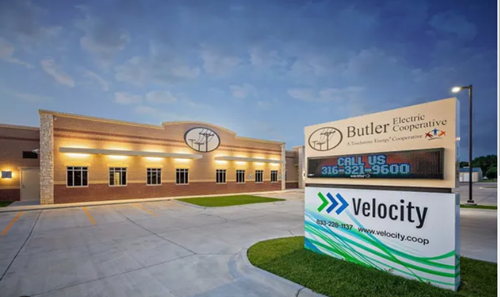
Velocity CEO Kevin Brownless tells Telecompetitor that the company tries to keep consumer-facing pricing as close to cost as possible, and that Velocity and Butler plan to drive fiber into these markets over the coming years thanks to federal subsidies.
Memphis Mayor Jim Strickland has introduced an ambitious new plan to incentivize private telecom providers to deliver affordable fiber to 85 percent of the Tennessee city of 633,000. The project, part of the city’s Memphis 3.0 master plan, will spend more than $700 million to expand broadband in a city where less than a quarter of residents–most of them wealthy–have access to next-generation fiber.
On September 23, city leaders introduced a new city ordinance amendment establishing new, streamlined permitting and fee requirements. Their goal: to incentivize companies willing to expand fiber optic broadband to at least 60 percent of Memphis’ residential and business premises and 60 percent of all existing low-income premises.
Not long after, city leaders unveiled more details about their "Smart Memphis Fiber" effort. After issuing an RFP last year, Memphis officials say they’ve struck a partnership with Paris-based Meridiam and Blue Suede Network to build a $700 million fiber optic network with an eye on eventually reaching 85 percent of the total Memphis population.
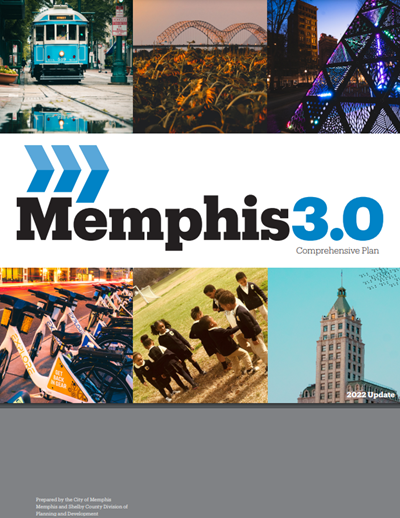
“City Government will incentivize any interested company by reducing our costs through reductions in permitting fees and right-of-way fees,” Strickland said in a recent presentation before the city council. “Additionally, we will streamline our process to allow a company to get to work faster. We are also putting our own skin in the game.”
Syracuse officials have launched a new wireless community broadband network they hope will help bring affordable broadband access to the city of 145,000.
Dubbed Surge Link, the effort is backed by more than $3.5 million in federal funding and aims to deliver free broadband access to the city’s lowest income neighborhoods.
Motivated by peak pandemic connectivity headaches, Syracuse put out a request for proposal (RFP) late last year. The city then hired US Ignite as an advisor, and selected Geneva-based Community Broadband Networks (no relation to our program here at ILSR) to build a fixed wireless network capable of delivering discounted access starting with 2,500 underserved Syracuse households.
City officials tell ILSR the network is using Fixed Wireless Access technology, specifically Citizens Broadband Radio Service (CBRS), which is an emerging technology a growing number of municipalities and other nonprofit community groups have been experimenting with as a way to bring broadband to unserved and underserved residents in dense settings. And while CBRS has promise, as US Ignite notes, “because the technology is relatively new, the hardware and software associated with CBRS networks is also new. Vendors may still be working out the kinks in their solutions, particularly if those solutions are being used in novel ways, or need to interface with other older systems.”
It should also be noted that another New York community (Westchester County) embraced CBRS, only to find that it could not deliver the capacity they wanted to many people who needed the service.
Cleveland, Ohio is putting the finishing touches on an ambitious plan to build a citywide open access fiber network–and deliver affordable fixed wireless service–at minimal cost to city residents. The double-edged proposal aims to bring both meaningful broadband competition–and lower rates–to the long neglected city of 1.7 million people.
Last month, the city announced it had awarded $20 million in ARPA (American Rescue Plan Act) funds to Cleveland-based digital equity non-profit DigitalC. Under the proposal, DigitalC will spend 18 months building a fixed wireless broadband network capable of providing locals with symmetrical 100 Megabit per second (Mbps) service for $18 a month.
DigitalC’s fixed wireless service, EmpowerCLE+, launched in 2018 and accelerated its deployment in 2020 to meet the needs of frustrated parents and workers during peak COVID.
Speaking at ILSR’s and the National Digital Inclusion Alliance (NDIA) Building for Digital Equity (B4DE) event last week, DigitalC CEO Joshua Edmonds noted that the EmpowerCLE+ network currently passes 23,500 households in Cleveland, with 2,300 current subscribers. The city’s new agreement with the city should expand the network’s potential reach to 99.9% of homes in Cleveland.

“We're thankful for the opportunity and we're just really hoping that people use this as motivation to change things within their respective markets,” Edmonds told ILSR in a phone interview.